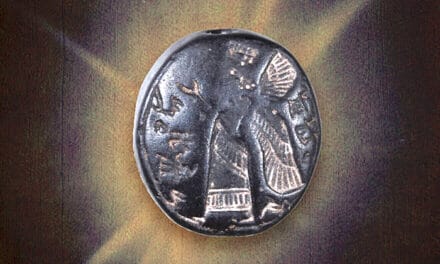Caption: A family at a modern Passover seder on the first night of the holiday in Tzur Hadassah, Israel, April 22, 2016. Photo courtesy of Nati Shohat/Flash90.
ByTAMAR APPEL
JNS
The Passover seder has all the features of a meaningful Jewish educational encounter: text study, experiential learning, spiritedness, time for older and younger generations to engage together in matters of faith and history, and ample amounts of food. All this is to inspire curiosity among children about the miracles God wrought in saving the Israelites from the Egyptians.
Cultivating Curiosity
At the seder, as in life, curiosity is not just for kids. We adults are commanded to relay the story of the exodus to children on this holiday. But the seder gives grown-ups, too, the opportunity to revisit age-old questions and ask new ones, bringing another year’s worth of Torah study, life experience and communal and national developments to bear. In doing so, we embody the wise son’s interest in the ancient and medieval texts and the rituals of Passover while modeling that interest for any children present.
Curiosity is a powerful driving force for learning, but our sages knew that not everyone has that desire or can manifest it on demand. In their wisdom, they encouraged this sensibility with the “Ma Nishtana,” specifying four questions to ask at the start of the seder with the implicit hope that action has the potential to cultivate effect. Shortly before the meal begins, we ask more prescribed questions about the significance of items on the seder plate. Presumably, in the meantime, explorations of our own have elicited deep learning and reflection.
In this way, what may appear to be formulaic inquiries at the seder are, in fact, time-honored questions that can evoke genuine interest in the Jewish past and present, and an appreciation of God’s presence and relevance in our lives. Curiosity alone, though, is not sufficient to fulfill the mission of the seder. We also need empathy.
If curiosity is not always easy to call forth, empathy can be far more elusive. Recognizing how others feel to the extent of experiencing those emotions vicariously can be more aspirational than achievable, and even more so when those people are long gone. Yet, we are mandated in the Haggadah to do just that: Bechol dor v’dor, “In every generation,” a person must view themselves as though they had left Egypt. To support this directive, the Haggadah cites verses from the Torah about identifying with the ancestors God took out of Egypt and declaring that we, ourselves, were redeemed and brought to the Holy Land.
Just as the seder ritualizes curiosity, intending to foster it further, it offers experiences that can awaken this sense of identification. We eat foods reminiscent of the backbreaking work and tears that the Israelites endured in slavery. Singing Dayenu, we imagine having been redeemed only partially, insisting that for those who were there, and for us, too, that would have been reason to glorify God’s name. Before we even begin telling the story, we say the paragraph Ha lachma anya, “This is the bread of affliction,” inviting those who are hungry to join and partake with us.
Rabbi Joseph Soloveitchik noted that only those who are free have the capacity to welcome guests into their homes, and in doing so, we behave as people who feel the relief of liberation after having suffered in captivity.
Empathy?
In positioning curiosity as a catalyst for empathy, the educational framework of the Haggadah suggests a model for us to emulate in our relationships. This is particularly true when we want to support people who are struggling. Approaching someone with curiosity means trying to understand their concerns and challenges. It means asking questions that clarify rather than jumping to conclusions that are grounded in superficial observations. Asking questions is a form of caring and a way to convey that. As our curiosity yields answers and deeper cognitive understanding, we are better equipped to shift toward the emotional experience of imagining ourselves in another person’s shoes. It is from this empathetic perspective, rooted in understanding, that we are best able to extend support.
It is also from that perspective that classroom teachers can best support a student whose learning or social-emotional profile is unclear. At Jewish day schools I work with, we begin with the premise advocated by psychologist and author Dr. Ross Greene that “kids do well if they can,” and support teachers as they explore their students’ learning strengths and struggles. This helps them become attuned to their students’ needs and support them accordingly. Coaching teachers toward curiosity and wondering invariably leads to greater understanding and modeling empathy, just as we do at the Passover seder.
Schools are essential settings for this kind of education, and, as Passover highlights, so is home.








